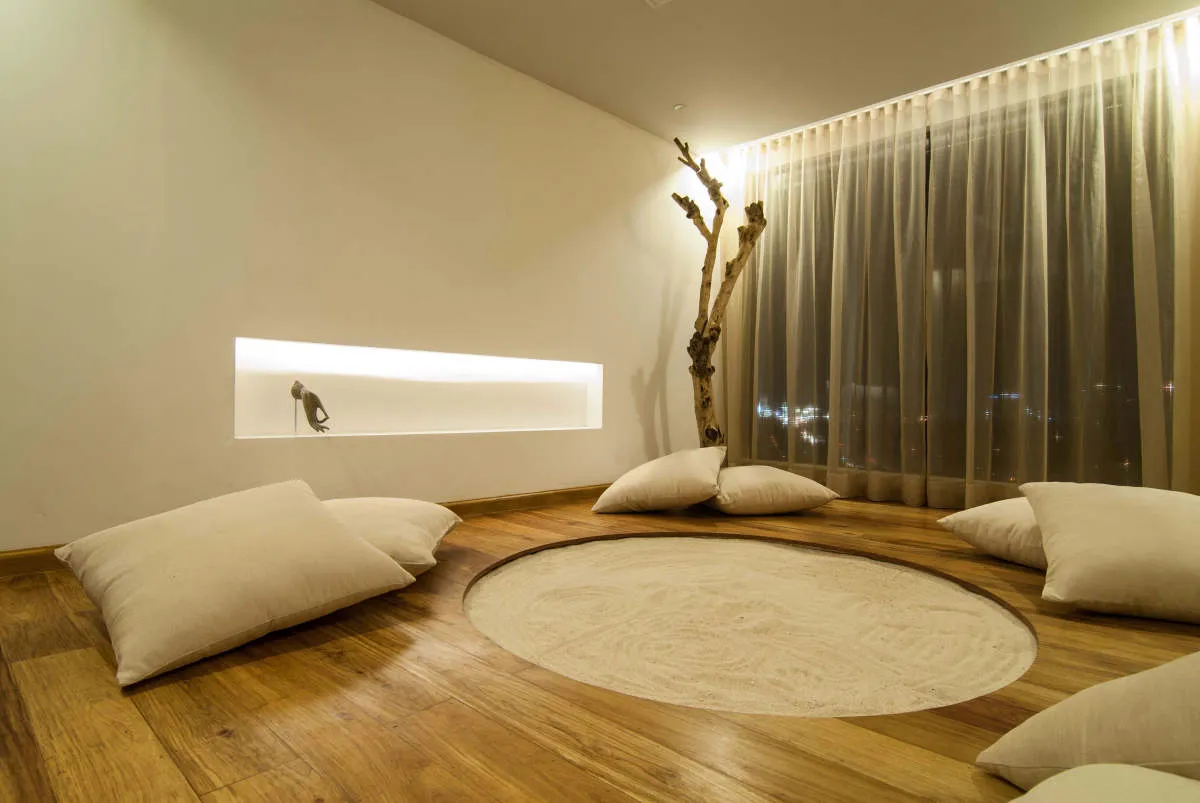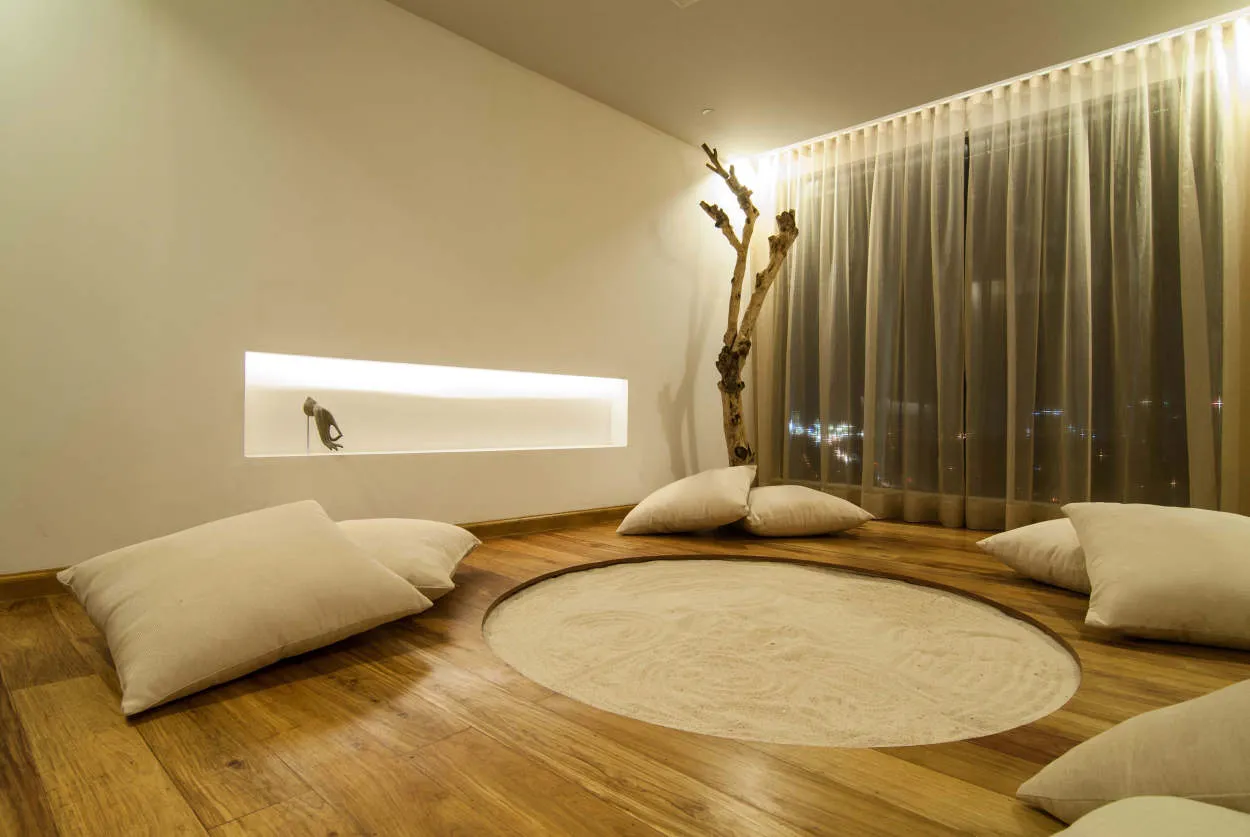Creating a Zen space at home is essential for finding peace and fostering a sense of mindfulness. In this article, we explore the art of decor that promotes tranquility and serenity, helping you create a harmonious environment that nourishes the mind, body, and soul.
Incorporating Elements of Zen in Home Design

When it comes to creating a Zen space in your home, the design elements you choose play a significant role in promoting tranquility and mindfulness. Incorporating elements of Zen into your home design can help create a peaceful and harmonious environment. Here are some key aspects to consider:
Natural Materials
Using natural materials is essential in creating a Zen-like atmosphere. Opt for furniture and decor made from natural materials such as wood, bamboo, and stone. These elements bring a sense of warmth and connection to nature into your living space.
Minimalism
Simplicity is a fundamental principle of Zen design. Embrace minimalism by decluttering your space and sticking to a clean, uncluttered aesthetic. Clear surfaces and open spaces promote a sense of calm and clarity.
Neutral Colors
Choose a color palette that consists of calm, neutral tones. Shades of beige, brown, gray, and white create a serene atmosphere. Avoid using bold or vibrant colors, as they can be visually distracting and disrupt the tranquility of the space.
Natural Lighting
Allow natural light to fill your home whenever possible. Natural lighting has a positive impact on mood and overall well-being. Use sheer curtains or blinds to let in as much natural light as possible and create a peaceful ambiance in your space.
Indoor Plants
Adding indoor plants to your home not only enhances the visual appeal but also fosters a connection with nature. Plants bring a touch of greenery and life into your surroundings while purifying the air and promoting a sense of tranquility.
Functional and Comfortable Space
Ensure that your home design promotes functionality and comfort. Create designated spaces for different activities, such as a meditation corner, a reading nook, or a yoga area. Make sure furniture is comfortable and arranged in a way that allows for easy movement and flow.
By incorporating these elements of Zen in your home design, you can create a space that promotes tranquility, mindfulness, and a sense of calm. Remember, the key is to keep the design simple, natural, and free of distractions.
Minimalist and Calming Decor Ideas
In today’s fast-paced world, finding tranquility and mindfulness at home has become more important than ever. Creating a zen space in your living area can help you unwind, find peace, and restore balance in your life. Here are some minimalist and calming decor ideas to transform your home into a serene sanctuary:
1. Neutral Color Palette
Use a neutral color palette as the foundation of your decor. Shades of white, beige, light gray, and soft pastels create a soothing and calming atmosphere. These colors promote relaxation and help clear the mind.
2. Clutter-Free Living
Decluttering your space is essential to achieve a minimalist and calming environment. Keep only the essentials and get rid of unnecessary items. Organize your belongings neatly, utilizing storage solutions to maintain a clean and clutter-free space.
3. Natural Elements
Incorporating natural elements brings a sense of serenity to your decor. Add indoor plants to purify the air and create a connection with nature. Incorporate natural materials like wood, stone, and jute to foster a grounding and peaceful ambiance.
4. Soft Textures and Materials
Opt for soft and cozy textures to enhance comfort in your zen space. Plush rugs, soft cushions, and throw blankets made from natural fibers like cotton and linen create a warm and inviting atmosphere.
5. Minimalist Furniture
Choose furniture with clean lines and a minimalist design to create an uncluttered and peaceful environment. Keep furniture to a minimum and select pieces that serve a purpose while maintaining a sense of openness and spaciousness.
6. Lighting Ambience
Utilize soft and warm lighting to set the mood in your zen space. Avoid harsh and bright lights, and instead opt for warm-toned bulbs, dimmers, or even candles. Consider incorporating natural light through sheer curtains or blinds to create a serene and tranquil atmosphere.
7. Mindful Decor Accents
Add mindful decor accents like meditation cushions, calming artwork, and inspirational quotes to enhance the tranquility of your space. Select pieces that resonate with you and promote a sense of relaxation and mindfulness.
By incorporating these minimalist and calming decor ideas, you can create a zen space that fosters tranquility and mindfulness. Stay tuned for more tips and inspiration on how to create a harmonious living environment.
Eco-Friendly Materials for a Peaceful Space
When creating a Zen space that promotes tranquility and mindfulness, choosing eco-friendly materials is essential to align with the philosophy of harmonious living with nature. Incorporating sustainable materials not only benefits the environment but also creates a peaceful atmosphere that enhances overall well-being. Here are some eco-friendly materials to consider:
1. Bamboo
Bamboo is a versatile and sustainable material that can be used in various aspects of Zen space decor. From flooring to furniture and accessories, bamboo brings a natural and calming element to the environment. Its fast growth and renewability make it an eco-conscious choice.
2. Cork
Cork is an excellent eco-friendly material for flooring and wall coverings. It is harvested from the bark of cork oak trees, allowing the trees to continue living and regenerating the bark. Cork provides a soft and comfortable surface while reducing noise, making it perfect for creating a serene environment.
3. Organic Fabrics
When selecting textiles for curtains, cushions, and rugs, opt for organic fabrics made from natural fibers such as organic cotton, linen, or hemp. These materials are free from harmful chemicals and pesticides, promoting better air quality and reducing allergies.
4. Recycled Materials
Embrace sustainability by incorporating recycled materials into your Zen space. Consider using reclaimed wood for furniture, mirrors, or accent pieces. Repurposed items, such as vintage doors or salvaged architectural features, add a unique touch while minimizing waste.
5. Low-VOC Paints
Choose low-VOC (volatile organic compounds) or zero-VOC paints for the walls of your Zen space. Traditional paints often release harmful chemicals into the air, while low-VOC alternatives are non-toxic and improve indoor air quality. Stick to calming earthy tones to further enhance the tranquility of the space.
Incorporating eco-friendly materials into your Zen space not only fosters a peaceful atmosphere but also contributes to a sustainable lifestyle. By choosing mindful and sustainable options, you can create an environment that promotes both your well-being and the well-being of the planet.
Creating a Meditation Area at Home
When it comes to creating a zen space in your home, having a dedicated meditation area can greatly enhance your practice of tranquility and mindfulness. Here are some tips to help you create the perfect space:
1. Choose a Quiet Location
Find a peaceful corner or room in your home where you can retreat from distractions and noise. This will ensure a serene environment conducive to meditation.
2. Clear Clutter
Remove any unnecessary items or clutter from the space. A clean and minimalistic environment will help promote a sense of calmness and serenity.
3. Bring in Nature
Consider adding natural elements such as plants, flowers, or a small indoor fountain to your meditation area. These natural elements can help create a soothing and grounding atmosphere.
4. Soft Lighting
Opt for soft, diffused lighting in your meditation area. Avoid harsh, bright lights that can be distracting. Instead, use candles, fairy lights, or a Himalayan salt lamp to create a warm and peaceful ambiance.
5. Comfortable Seating
Invest in a comfortable cushion, meditation pillow, or a comfortable chair to sit on during your meditation practice. Having proper support will allow you to relax and focus fully on your practice.
6. Personalize Your Space
Add personal touches to your meditation area to make it more inviting and reflective of your own style. This could include meaningful artwork, statues, or inspirational quotes.
7. Quiet the Mind
As you sit in your meditation space, take a few moments to quiet your mind. Focus on your breath, let go of any tension, and embrace a state of mindfulness and tranquility.
By creating a dedicated meditation area at home, you can cultivate a space specifically designed for relaxation and self-reflection. Remember, there is no right or wrong way to create your meditation space. The most important thing is to make it a reflection of your own personal journey towards inner peace.
The Psychology of Tranquil Design
Creating a Zen Space: Decor for Tranquility and Mindfulness
Creating a serene and calming environment at home can have a significant impact on our overall well-being. Through thoughtful design choices, we can cultivate a Zen space that promotes tranquility and mindfulness. Understanding the psychology behind tranquil design can help us create a harmonious and peaceful atmosphere.
One key concept to consider in tranquil design is simplicity. Minimalistic and clutter-free spaces allow for better focus and reduce mental distractions. By removing unnecessary objects and incorporating clean lines, we create a visually quiet environment that promotes relaxation.
Natural elements play a crucial role in tranquil design. Incorporating organic materials, such as wood, stone, and plants, brings a sense of grounding and connection to nature. These elements evoke feelings of calmness and peacefulness, aiding in stress reduction and promoting a serene atmosphere.
Color psychology also plays a significant role in creating a tranquil space. Soft and muted tones, such as pastels and earthy hues, have a soothing effect on our minds. Blues and greens, in particular, are known to promote feelings of serenity and tranquility. By choosing these colors for our walls, furniture, and decor, we can create a peaceful and tranquil ambiance.
Another essential aspect of tranquil design is proper lighting. Soft and diffused lighting, like natural light or warm-toned artificial lighting, helps create a calming atmosphere. Harsh or bright lights can cause stress and anxiety, so it’s important to choose lighting options that mimic natural daylight to promote relaxation.
Incorporating elements that stimulate our senses can also enhance the tranquility of a space. Scented candles, essential oils, and natural fragrances can have a calming effect on the mind. The sound of running water from a small indoor fountain or a wind chime can create a soothing ambiance, further enhancing the Zen atmosphere.
Finally, it’s crucial to declutter and organize our spaces regularly. A cluttered and disorganized environment can create a sense of chaos and hinder our ability to relax. By keeping our Zen space tidy and well-maintained, we promote a sense of order and tranquility.
In conclusion, when designing a Zen space for tranquility and mindfulness, simplicity, natural elements, soothing colors, proper lighting, sensory stimulation, and organization are key factors to consider. By harnessing the power of tranquil design, we can create a sanctuary at home that promotes a calm and balanced state of mind.
Balancing Aesthetics and Mindfulness
In our modern and fast-paced world, finding peace and tranquility can be a challenging task. That’s why creating a zen space in your home can make a significant difference in promoting mindfulness and bringing a sense of calm to your life.
When it comes to designing a space that encourages tranquility and mindfulness, it’s essential to strike a balance between aesthetics and functionality. Here are some key elements to consider:
Minimalist Design
Embrace a minimalist approach when choosing furniture and decor for your zen space. Aim for clean lines, uncluttered spaces, and a neutral color palette. This simplicity brings a sense of serenity and allows your mind to unwind.
Natural Elements
Introduce natural elements into your space to create a sense of harmony with the environment. Incorporate plants, natural materials like wood or stone, and soft lighting to invoke a connection to nature. These elements can help reduce stress and improve overall well-being.
Meditation Corner
Dedicate a specific area for meditation in your zen space. Use a comfortable cushion or mat, add a calming background sound like gentle water flow or birdsong, and ensure the space is free from distractions. This dedicated corner will serve as a sanctuary for quiet reflection and mindfulness practice.
Decluttering
Clutter can be a significant source of mental clutter. Practice decluttering regularly in your zen space to create a peaceful atmosphere. Keep only essential items visible and store the rest in well-organized storage solutions. A clutter-free environment promotes focus and clarity.
By striking a balance between aesthetics and mindfulness in your zen space, you can create a harmonious atmosphere that promotes tranquility and overall well-being.
Remember, the key is to design a space that reflects your personal style while incorporating elements that encourage mindfulness. With the right blend of aesthetics and functionality, your zen space will become a sanctuary for peace and serenity in your daily life.
Conclusion
In conclusion, creating a Zen space through mindful decor can greatly enhance tranquility and mindfulness in our lives. By incorporating elements such as minimalism, natural materials, soothing colors, and serene artwork, we can cultivate a space that promotes relaxation, clarity, and inner peace. Taking the time to curate our environment in a way that aligns with Zen principles can have a profound impact on our overall well-being and mental state.



